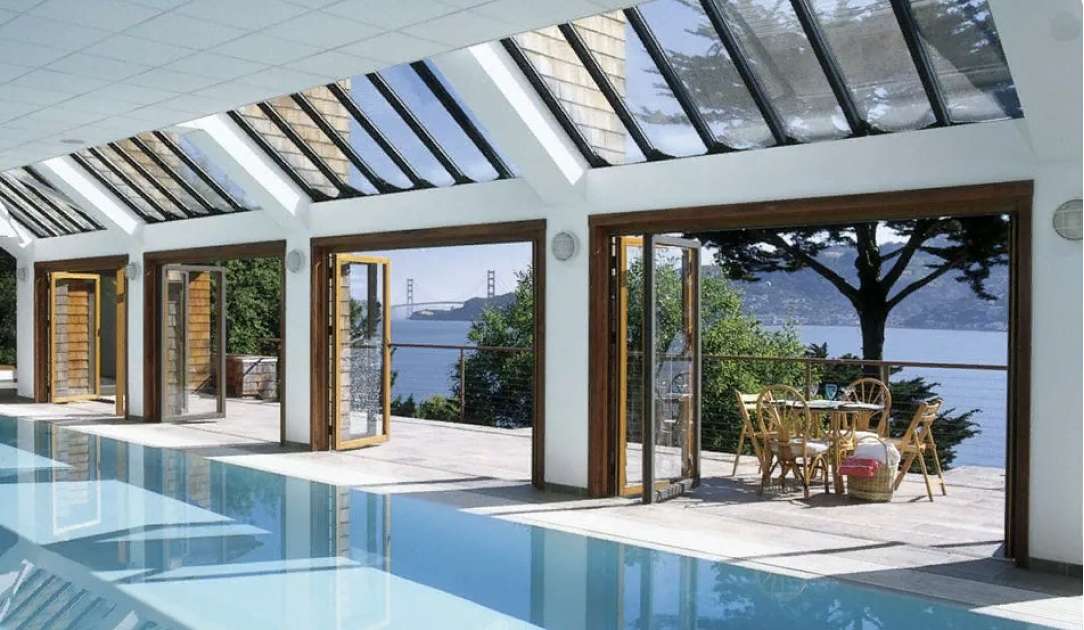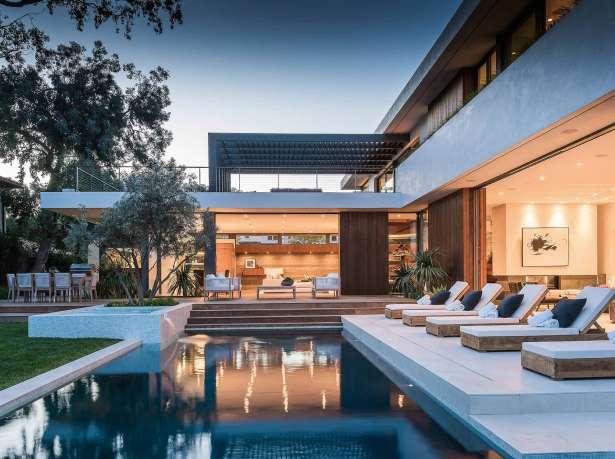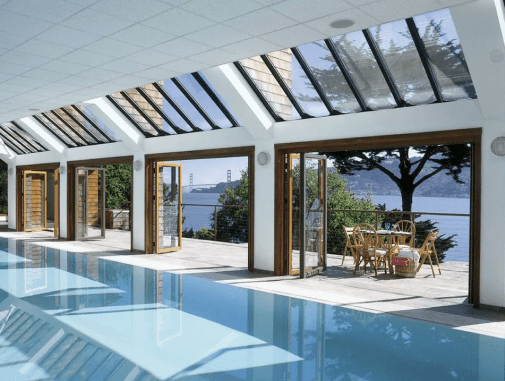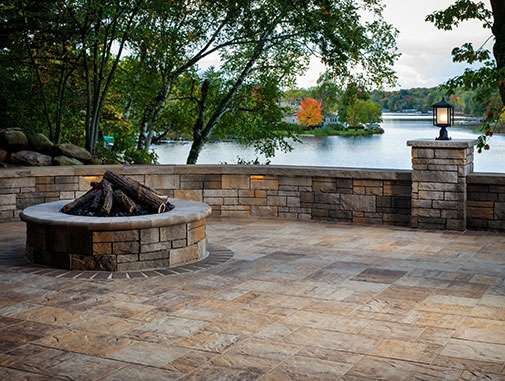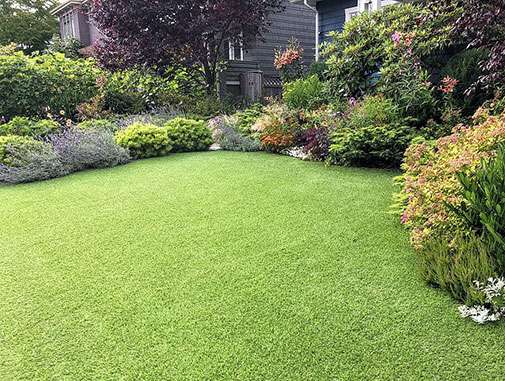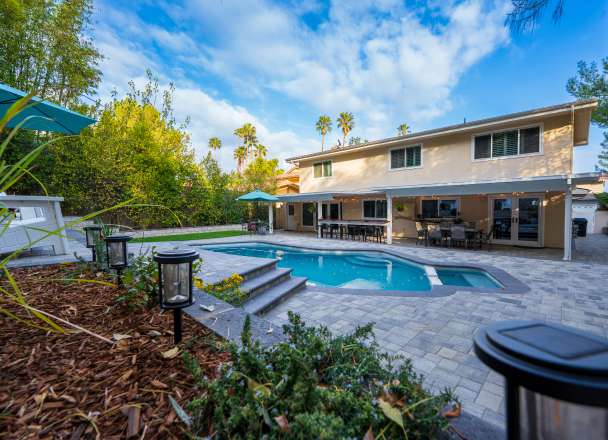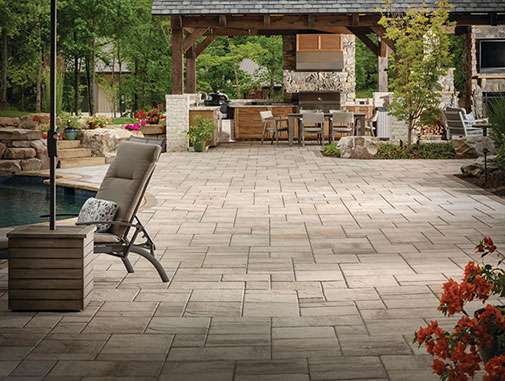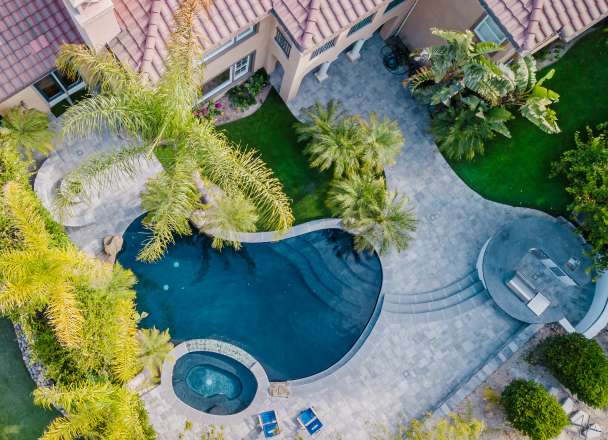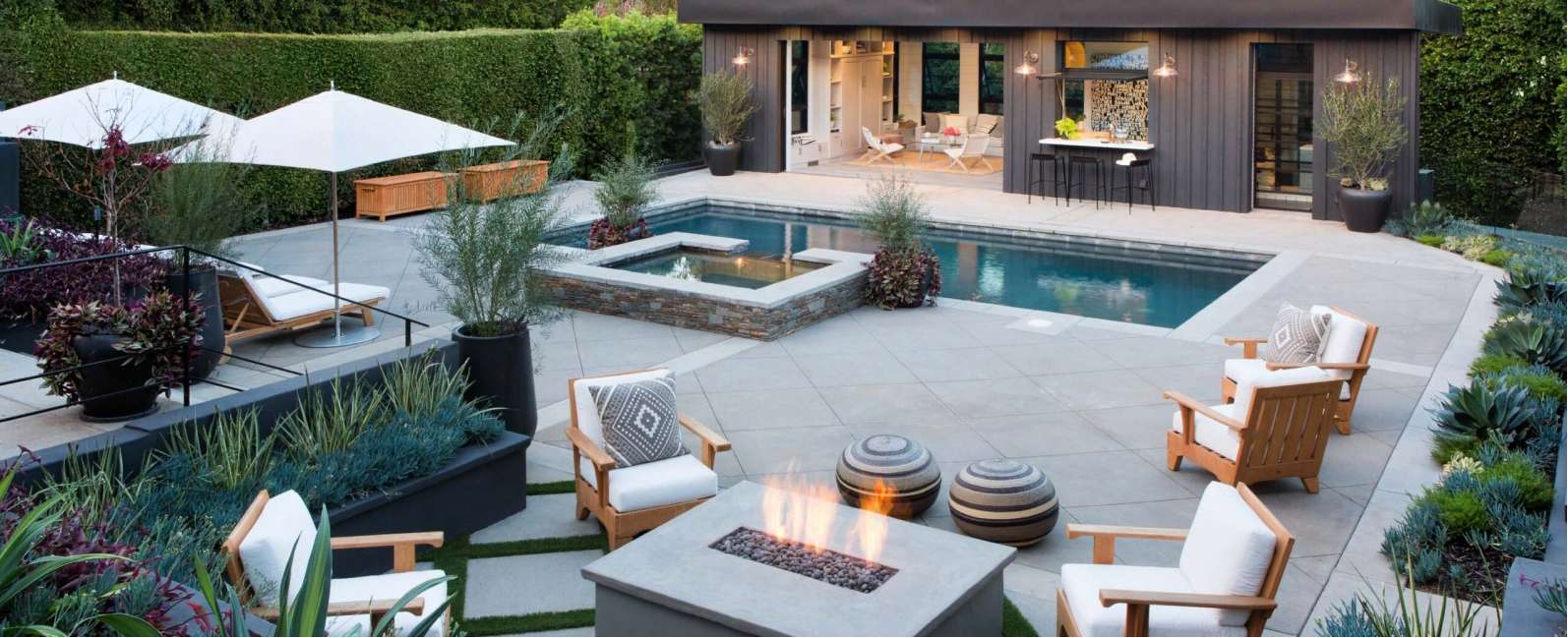Backyard Remodeling: Composite vs. Wood Decking
- #Exterior Remodeling
- #Outdoor Living
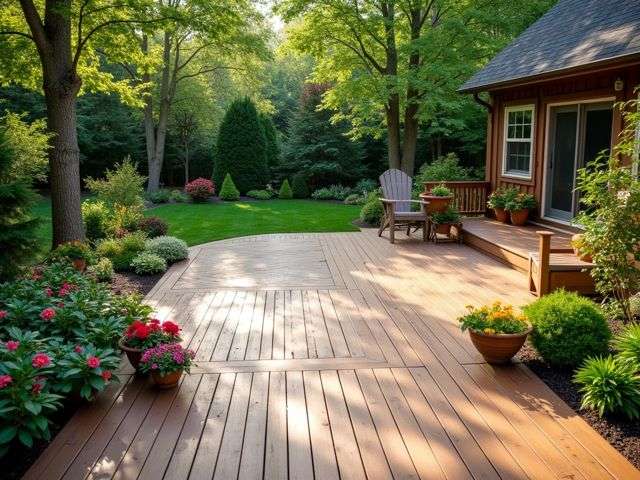
- Smooth Plaster Finish
- Shimmering Pebble Finish
Composite decking provides a long-lasting, low-maintenance option for backyard remodeling, making it ideal for families. In contrast, wood decking offers natural beauty but requires significant upkeep and is more susceptible to damage.
1. Composite Decking: A Long-lasting Alternative
When considering upgrades to your family home’s outdoor space, composite decking emerges as a standout option due to its blend of durability, style, and environmental consciousness. Here’s why it may be the perfect choice for a growing family looking to craft a beautiful and functional backyard:
- Durability and Longevity: One of the most compelling features of composite decking is its exceptional resistance to the elements. Unlike traditional wood, composite materials withstand moisture, intense sunlight, and fluctuating temperatures without warping, rotting, or fading. This impressive durability supports a long lifespan, often backed by warranties ranging from 25 to 30 years. For busy families, this means a safe and sturdy deck that retains its aesthetic appeal without requiring frequent repairs.
- Low Maintenance Requirements: Time is precious, especially for families with active children. Composite decking needs minimal upkeep compared to wood, eliminating the need for regular sealing or painting. Cleaning is as easy as a simple rinse with water or a quick wash with mild soap. This ease of maintenance allows more time for relaxation and family activities outdoors.
- Safety Features: Safety is paramount in any family setting. Composite decking enhances safety with a splinter-free surface and seamless design that eliminates risks from exposed fixtures like nails or screws. The materials are also slip-resistant, making it a safer option for children who love to run and play outside.
- Environmental Impact: Composite decking is a green choice. Typically made from a mix of recycled wood fibers and plastics, it uses fewer natural resources and helps keep waste out of landfills. By choosing composite decking, families contribute to a more sustainable future, aligning with eco-friendly values and teaching children about environmental responsibility.
- Aesthetics and Flexibility: With an array of colors and textures that simulate the natural beauty of wood, composite decking allows for creative freedom in designing your outdoor space. Whether you prefer a modern look or a traditional aesthetic, you can achieve it without the drawbacks of real wood. This versatility ensures that your decking can evolve with your family’s needs and style preferences over the years.
In summary, composite decking provides growing families with a durable, low-maintenance, and environmentally friendly option that doesn’t skimp on safety or style. Embracing this long-lasting alternative means investing in quality outdoor family time, with the added peace of mind from making a sustainable choice.

2. Wood Decking: The Traditional Choice
Wood decking is a traditional and popular choice for families seeking to enhance their outdoor living spaces. It stands out for its natural beauty and its ability to integrate seamlessly into various backyard landscapes.
Natural Beauty and Variety
One of the main draws of wood decking is its natural aesthetic. Wood provides a warm, inviting look with unique grain patterns and rich color variations. Homeowners appreciate the authentic feel it adds to their outdoor settings, contrasting nicely with synthetic materials. The variety of wood types, from pressure-treated pine to luxurious tropical hardwoods, allows for a range of looks and budget options.
Cost-Effective Solutions
For many families, budget plays a key role in home improvements. Wood decking initially comes across as more cost-effective, with installation prices for materials like pressure-treated pine and STK cedar starting around $24–28 per square foot. This makes it a favorable option for those looking to enhance their living spaces without a hefty upfront investment.
Cool Comfort and Easy Repairs
In addition to its aesthetic appeal, wood decking remains cooler to the touch compared to composite materials, a significant advantage in warmer climates. When it comes to maintenance, although wood requires more effort to maintain its appearance, repairs are straightforward. Individual boards can be replaced easily if they suffer from wear or damage, keeping your deck safe and appealing with minimal hassle.
Challenges with Durability and Maintenance
Wood decking demands considerable upkeep. To maintain its appearance, wood decks need regular treatments, including staining, sealing, and refinishing. These processes protect the wood from issues like fading, weathering, and rot. Families should be mindful of the time and cost needed for these maintenance tasks.
Wood is also vulnerable to elements. It can suffer from rot, decay, and insect damage if not properly maintained, especially in damp environments. Regular upkeep is needed to combat these challenges and prevent long-term deterioration, which could otherwise lead to costly repairs or replacements.
Making the Choice
The decision between wood and alternative decking materials often hinges on weighing immediate cost savings against long-term maintenance and durability. Consider factors such as maintenance commitment, climate, and your family’s usage expectations when planning a deck. Wood decking, while beautiful and initially cost-effective, entails a commitment to upkeep to retain its condition and appearance over time. By understanding these aspects, families can better determine if wood decking aligns with their lifestyle and backyard vision.
3. Cost Comparison: Composite vs. Wood Decking
Choosing the right decking material for your backyard can seem daunting, especially with options like composite and wood decking available. Understanding the cost implications of each can aid a growing family in making a smart decision that balances the initial outlay with long-term benefits.
Composite Decking Cost Factors:
Composite decking, though initially more expensive, presents a beneficial long-term investment. Installation costs range between $30 to $60 per square foot. This material stands out due to its low maintenance requirements—no need for annual sanding, staining, or sealing. This minimal upkeep could translate to negligible ongoing costs, appealing to families seeking to minimize routine chores and expenses.
Moreover, the durability of composite decking adds to its cost-effectiveness. With warranties often extending from 25 to 50 years, investing in composite decking can mean fewer concerns over repairs and replacements down the line.
Wood Decking Cost Factors:
In contrast, wood decking offers a lower initial cost, approximately $15 to $30 per square foot for installation, making it an attractive option for budget-conscious families. However, wood requires significant maintenance, including frequent sanding, staining, and sealing, costing around $451 annually. This recurrent expenditure can accumulate over the years, making wood decking potentially more expensive in the long run despite the lower startup cost.
Wood is also prone to environmental damage like warping, cracking, and insect infestation, which might increase maintenance costs or even require premature replacement, a critical consideration for families looking to optimize their investment.
Overall Cost-Effectiveness:
When evaluating total ownership costs—which include initial price, maintenance expenditures, and potential repairs—it becomes clear that composite decks, while more costly upfront, offer significant savings over time. In 2023, the average upfront cost difference is notable, with wood decks costing around $17,000 and composite decks $23,000. Yet, the reduced maintenance and higher durability of composite decks compensate for the initial price difference.
For families aiming to balance current budgets with future savings, understanding these cost dynamics is key. While wood decks can be less expensive initially, ongoing expenses and potential for increased repair needs make composite decking a compelling option for those looking to reduce long-term costs.
Both decking types have their merits, but the choice often boils down to personal preferences and readiness for either immediate expense or ongoing maintenance. By considering both immediate and future financial implications, families can make a decision that suits their current economic situation and long-term enjoyment of their home.

4. Making the Right Choice for Your Backyard
When deciding on the best decking material for your growing family’s backyard, it’s important to assess both composite and wood options. Each material comes with its distinct maintenance needs, durability, cost implications, aesthetic appeal, and environmental impact.
Composite Decking: A Low-Maintenance and Durable Option
Composite decking, such as those offered by Trex, with warranties ranging from 25 to 50 years, presents a solid choice for families seeking longevity and minimal upkeep. This type of decking eliminates the need for frequent sanding, sealing, or staining. Composite materials are slightly more expensive initially, costing between $30-$60 per square foot for installation, but they compensate with very low maintenance costs afterward. This can make composite decking more cost-effective in the long run, eventually surpassing the costs associated with wood decks.
The appearance of composite decking has evolved, offering a variety of hues and patterns that allow for creative design options. However, it’s important to note that once selected, the color cannot be altered since these decks can’t be stained or painted. For families considering sustainable options, composite decking is made largely from recycled materials like plastic film and reclaimed sawdust, reducing the overall environmental footprint of your home.
Wood Decking: Natural Beauty with More Maintenance
In contrast, wood decking provides a classic and natural look, often appreciated for its authenticity and variety of stains. Initial costs for wood are lower, typically ranging from $15-$30 per square foot. Yet, it requires substantial maintenance, such as painting, staining, and sealing, adding up to around $451 per year. These upkeep demands contribute to higher lifetime costs and household chores. Additionally, wood is more susceptible to issues like warping, splintering, and insect damage, affecting the deck’s longevity and appearance over time.
Despite its challenges, wood remains a popular choice for families who prefer the aesthetic and feel of natural materials. It’s important to consider the environmental implications, such as the need for chemical treatments and the impact of deforestation.
Making Your Choice
Deciding between composite and wood decking ultimately hinges on weighing your family’s specific needs:
- Durability and Maintenance: If you favor durability and want to minimize upkeep, composite decking is a viable choice.
- Aesthetic and Customization: If the natural charm and customization options of wood are more essential for your home’s character, wood decking may suit your taste better.
- Budget Considerations: Consider not only initial costs but also long-term maintenance expenses. Composite decking offers significant savings over time.
For detailed guidance and personalized advice on choosing the right decking for your home, contact EHD Builders for a free estimate. Our team specializes in backyard transformations that cater to the unique life stages and preferences of each family, ensuring your outdoor space is not only beautiful but also functional and sustainable for years to come.

FAQ
What are the main benefits of composite decking for families?
Composite decking offers exceptional durability and longevity, withstanding various weather conditions without warping or fading. It requires minimal maintenance, eliminating the need for regular sealing or staining. Safety features such as a splinter-free surface and slip-resistance make it an ideal choice for children. Additionally, it is an environmentally friendly option, made from recycled materials, and provides aesthetic flexibility with various colors and textures.
How does wood decking compare to composite in terms of aesthetics?
Wood decking is celebrated for its natural beauty, unique grain patterns, and rich color variations. It provides an authentic look that contrasts beautifully with synthetic materials. Homeowners can choose from different wood types, allowing for a range of appearances that complement their outdoor spaces.
What are the maintenance requirements for wood decking?
Wood decking requires significant upkeep, including regular staining, sealing, and refinishing to protect against weathering, fading, and rot. Families should consider that these maintenance tasks demand time and can incur costs, which may make wood decking more expensive over time compared to composite options.
How do the initial costs of composite and wood decking compare?
Composite decking typically has a higher initial installation cost, ranging from $30 to $60 per square foot, whereas wood decking can be installed for about $15 to $30 per square foot. However, it is essential to factor in long-term maintenance costs, as wood may become more expensive over its lifespan due to its upkeep needs.
What should families consider when choosing between composite and wood decking?
Families should evaluate their maintenance commitment, aesthetic preferences, budget considerations, and the climatic conditions in their area. Composite decking suits those looking for durability and low upkeep, while wood offers natural beauty and customization at the cost of higher maintenance. Understanding the long-term financial implications of both options can help make an informed decision.
